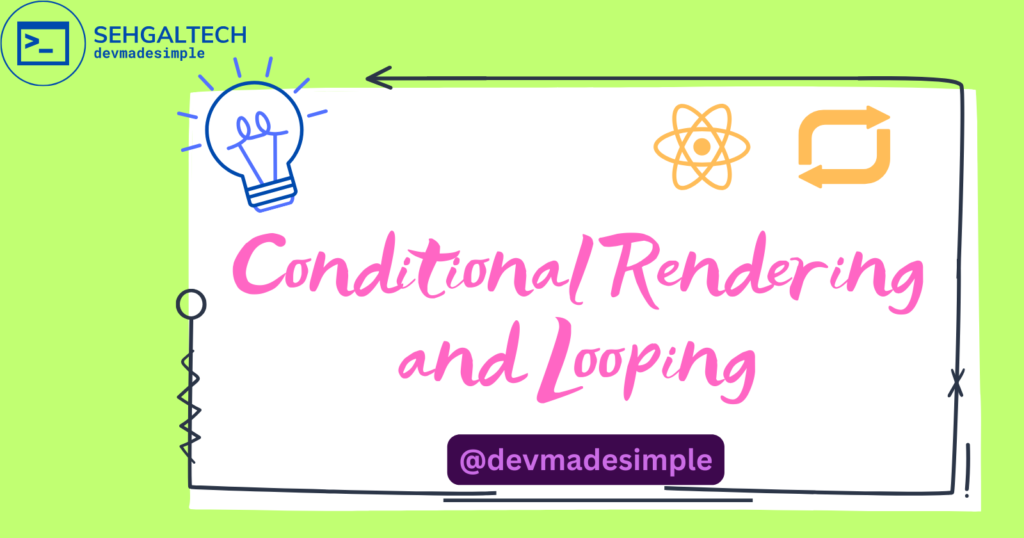
Welcome back to the React 101 series! In this edition, we’re diving into the dynamic world of conditional rendering and loops in React. As you build more complex applications, the need to dynamically display content based on conditions and iterate through data becomes essential. Let’s explore the fundamentals of conditional rendering and loops, empowering you to create more flexible and responsive React components.
Conditional Rendering in React
Conditional rendering allows components to display different content based on certain conditions. This feature is particularly powerful when you want to show or hide elements, alter their appearance, or render specific components depending on the state of your application.
Using the Ternary Operator
One common way to implement conditional rendering is through the ternary operator. Here’s a simple example:
import React from 'react';
const ConditionalComponent = ({ isLoggedIn }) => {
return (
<div>
{isLoggedIn ? <p>Welcome, User!</p> : <p>Please log in.</p>}
</div>
);
};
export default ConditionalComponent;
In this example, the content displayed is determined by the isLoggedIn prop. If isLoggedIn is true, the user is welcomed; otherwise, they are prompted to log in.
Conditional Rendering with Logical && Operator
The logical && operator is another concise way to conditionally render content:
import React from 'react';
const AnotherConditionalComponent = ({ isAdmin }) => {
return (
<div>
{isAdmin && <p>Welcome, Admin!</p>}
</div>
);
};
export default AnotherConditionalComponent;
Here, the paragraph is rendered only if isAdmin is true.
Dynamic Content with Loops
Loops are crucial for handling arrays of data, dynamically creating components, and iterating through lists. React provides various ways to achieve this, with the map function being a common choice.
import React from 'react';
const ListComponent = ({ items }) => {
return (
<ul>
{items.map((item, index) => (
<li key={index}>{item}</li>
))}
</ul>
);
};
export default ListComponent;
In this example, the ListComponent takes an array of items as a prop and dynamically generates list items based on the array’s content.
Conditional Rendering and Loops Together
Combine conditional rendering and loops for powerful dynamic content creation. For instance, rendering a list conditionally based on user authentication:
import React from 'react';
const DynamicList = ({ isLoggedIn, items }) => {
return (
<div>
{isLoggedIn ? (
<ul>
{items.map((item, index) => (
<li key={index}>{item}</li>
))}
</ul>
) : (
<p>Please log in to view the list.</p>
)}
</div>
);
};
export default DynamicList;
In this scenario, the list is only displayed if the user is logged in; otherwise, a login prompt is shown.
Remember:
- Plan your conditions: Clearly define the logic that determines what content to display.
- Choose the right loop: Select the loop type that best suits your data structure and iteration needs.
- Keep it clean: Maintain clear and concise code for better readability and maintainability.
- Best practices: Use unique keys for elements rendered within loops to optimize performance.
Conclusion
Mastering conditional rendering and loops in React opens up a world of possibilities for creating dynamic, responsive, and personalized user interfaces. Whether you’re tailoring content based on user states or dynamically rendering lists, these techniques are indispensable in your React development journey.
Stay tuned for more insights and hands-on tutorials as we continue our React 101 series. Dynamic content awaits, and we’re here to guide you through every step!



